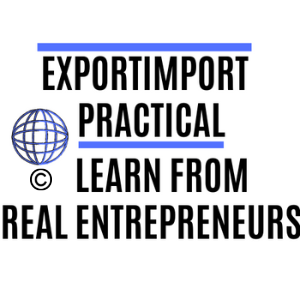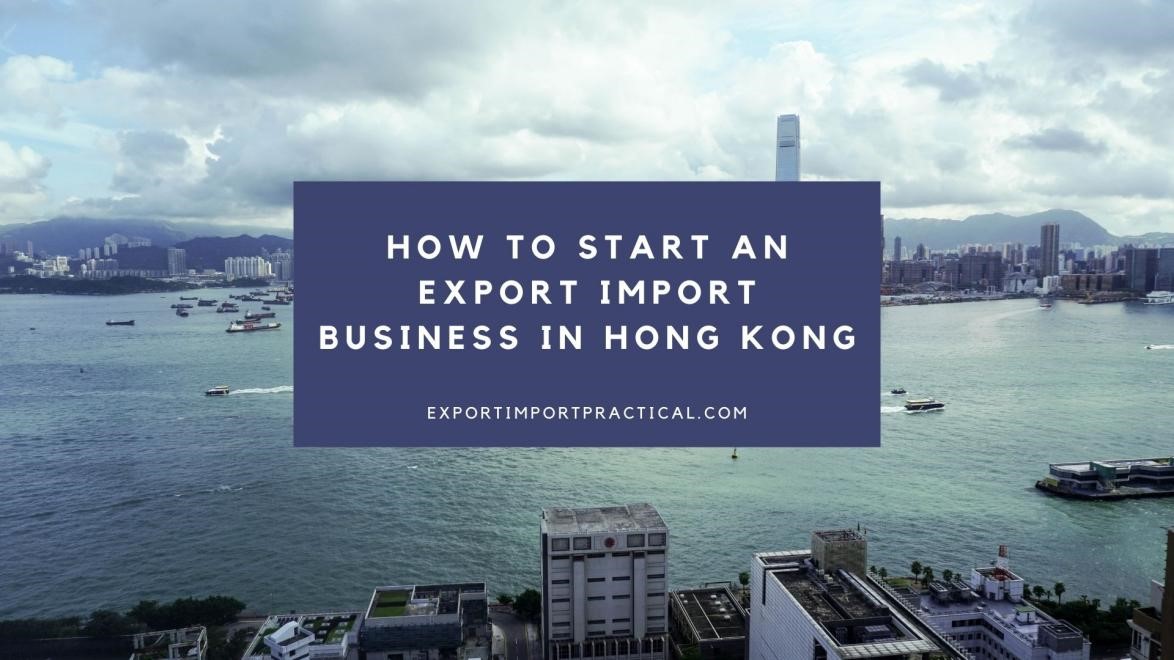If you ever visited Hong Kong or if you happen to live there, then you must know that Hong Kong is an asian trading hub, also called a “gateway to China”. It is a great place for trading companies and all kinds of international businesses for setting up their offices. Hong Kong has many advantages for export-import companies and also export-import agents and service providers.
If you want to know, how to start an export-import business in Hong Kong? Learn, what kinds of products to focus on if doing business in Hong Kong? How to register a business, open a bank account in Hong Kong and how to find customers there? Or how to source and import products from China via Hong Kong? Or what else related question you may have with doing business in hong kong, then in this article we will give you all the answers and guidelines for starting a business in this special city.
Overview about the Hong Kong market
Before we dive into details, we must start with a general overview of Hong Kong’s business environment and its specifics. After this, you may have many business ideas regarding importing or exporting.
With more than 7,5 million people, Hong Kong is a high-value market for most food products. Hong Kong is also a good market for all kinds of luxury goods, from watches to luxury cars. The city is also a bustling shopping market that attracts 40 million Chinese tourists to visit each year.
Hong Kong is an import-dependent market, with 95% of food and beverages imported. Agricultural production and food processing capacity are quite limited. Due to a lack of arable land, Hong Kong imports a lot of food from abroad. Hong Kong is also a trading portal for re-exports to mainland China, Macao, and other neighboring countries.
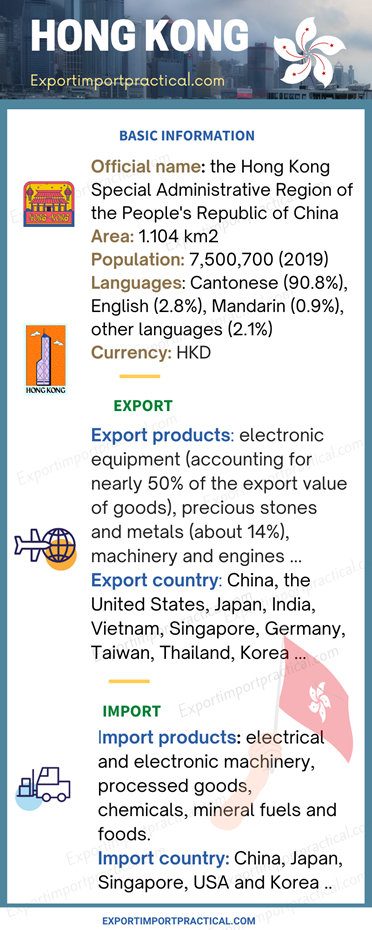
In 2017, Hong Kong ranked 7th in exports of goods, and 14th in exports of services in the world, of which:
- Export reached 496.9 billion USD, up 8%; The main export partners include China, the United States, Japan, India, Vietnam, Singapore, Germany, Taiwan, Thailand, Korea.
- Main export products are electronic equipment (accounting for nearly 50% of total export value), precious stones and metals (accounting for about 14%), machinery and equipment.
- Import is 558.6 billion USD, down 8.7%; main import partners include China, Japan, Singapore, the United States, and Korea.
- Main imported products are electrical and electronic machinery, processed goods, chemicals, mineral fuels, foods, luxury goods.
Advantages and disadvantages for export-import businesses in Hong Kong

Advantages
Hong Kong is the shopping center of the whole Asia region. The city has a retail environment that attracts domestic and mainland consumers and foreign tourists thanks to its 0% business tax rate..
Hong Kong has developed commercial, wholesale, and retail service systems. It is the financial and commercial center of Asia and the world and concentrates many companies in Asia – Pacific.
Hong Kong ranks in the top 5, in the world in free trade, also attracts FDI thanks to its favorable tax and legal environment in resolving disputes on various issues, especially the law in Hong Kong is very effective in the protection of intellectual property rights.
Hong Kong is a free market and attractive for many reasons
- 0% tariffs on most imports and exports.
- The simple tax system, only a few taxes.
- Developed infrastructure system, with the busiest airport in the world for passenger and cargo transportation.
- has One of the five busiest container ports in the world.
- Commerce, wholesale, and retail service systems are very developed.
- Concentrate many offices and branches of most corporations on buying, selling, and distributing goods, convenient for transactions.
- Hong Kong also regularly organizes fairs, seminars, major international events on economics, finance, banking.
- Hong Kong has high import demand in machinery, spare parts, phones and components, computers, luxury goods. A group of industrial products such as textiles, textile raw materials, footwear, bags, suitcases, umbrellas
- Hongkongers are wealthy consumers with high purchase power.
Disadvantages and challenges
- With a population of 7.5 million people, the volume of Hong Kong’s market is not large, especially for agricultural, forestry, and food products, mainly for transshipment of goods to the region and the world.
- Hong Kong is a highly demanding market, strict quality control of imported goods
- Highly competitive market
- Rental costs for an office, a warehouse is very expensive.
Enterprise establishment for foreign entrepreneurs in Hong Kong
Businesses established in Hong Kong (any type of Hong Kong company regardless of nationality) can benefit from access to the Chinese market from the CEPA (Closer Economic Partnership Arrangement) – a free trade agreement between the Central Government and the Hong Kong Special Administrative Region Authority.
You can export all eligible goods of Hong Kong to China without tax. Furthermore, service providers in Hong Kong in 40 regions are eligible for preferential treatment in mainland (China) service provision.
There must be at least one person or business in Hong Kong to act as a secretary for the company. A newly established enterprise does not need to have its own head office. The company address can use the same as an address for registration. Anyone who wishes to set up a business in Hongkong must start applying for the HK companies registry.
The process of registering a new company is not complicated and based on our experience it will take about 7 days after paid the registering fee. You can read more about registering a company directly from the HK companies registry.
Read also: How to choose great name for your business.
Opening a bank account in Hong Kong
Hong Kong has a policy of immigration management, monetary controls. And in recent years, opening a bank account for a new Hong Kong company has become complicated. Hong Kong has more than 180 different banks. Based on our experience, if you start a new company in Hong Kong, then follow the followings suggestions:
- Prefer to apply for a smaller local bank.
- Prepare a detailed business plan for bankers.
- Prepare a detailed CV about yourself to show your experience and background for bankers.
- Use a professional, experienced service provider to prepare the documents for the bank.
- To raise the possibility to get a bank account opened, you should either become a hong kong permanent resident or have a partner ( shareholder, director) as being local resident.
- Apply for at least 10 banks.
- Reserve funds to provide a deposit in your new bank account in HK bank.
- Also, consider bank alternatives that are easier to open an account.
Hong Kong’s export products
In the following, we are giving a list of the main product categories which HK is exporting to the world. If you want to start exporting from there, then consider the following product categories to pick up your niche.
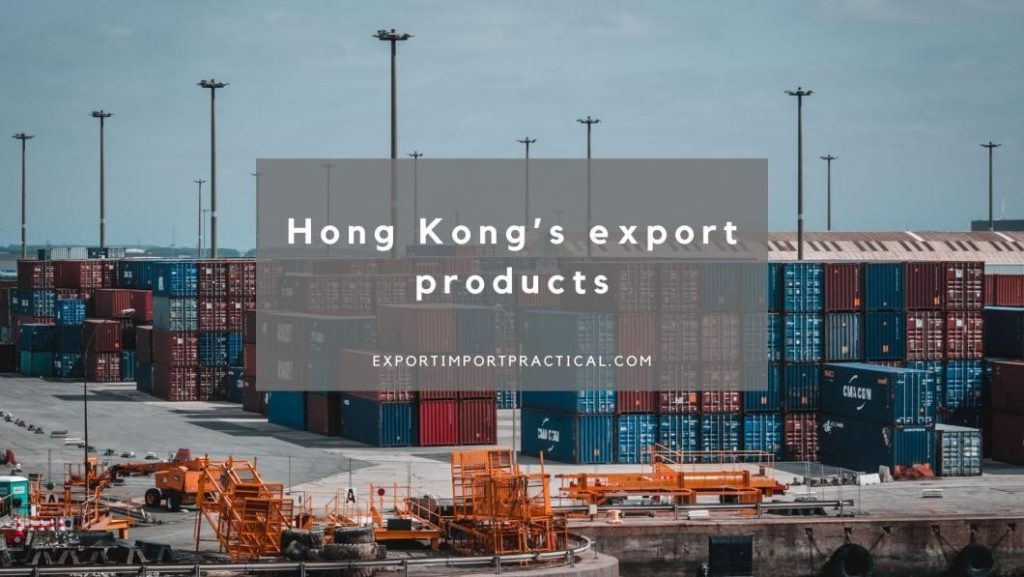
Toys
Hong Kong currently exports 60 to 70 percent of toys worldwide, with factories located in mainland China. Toys made in Hong Kong are not unique but are of good quality and safety as well.
Jewelry
Hong Kong is currently the leader in the production of gold items. Besides, 89.7% of Hong Kong’s total jewelry exports in the first half of 2017 were precious metals. The most popular product category is gem jewelry, especially diamonds mounted on 14K or 18K yellow/white gold.
Electronics
The Hong Kong electronics industry accounts for 59% of the total export value. Hong Kong exports electronic products, components, and related accessories with a total value of more than 170 billion USD. China, the US, Japan, Taiwan (China), and South Korea are the top export markets for Hong Kong. it is important to understand, most electronics have been manufactured in South China.
Hong Kong’s import products
If you are a local entrepreneur in HK, or you are outside and wish to export to this dynamic city, then definitely consider the following product categories.
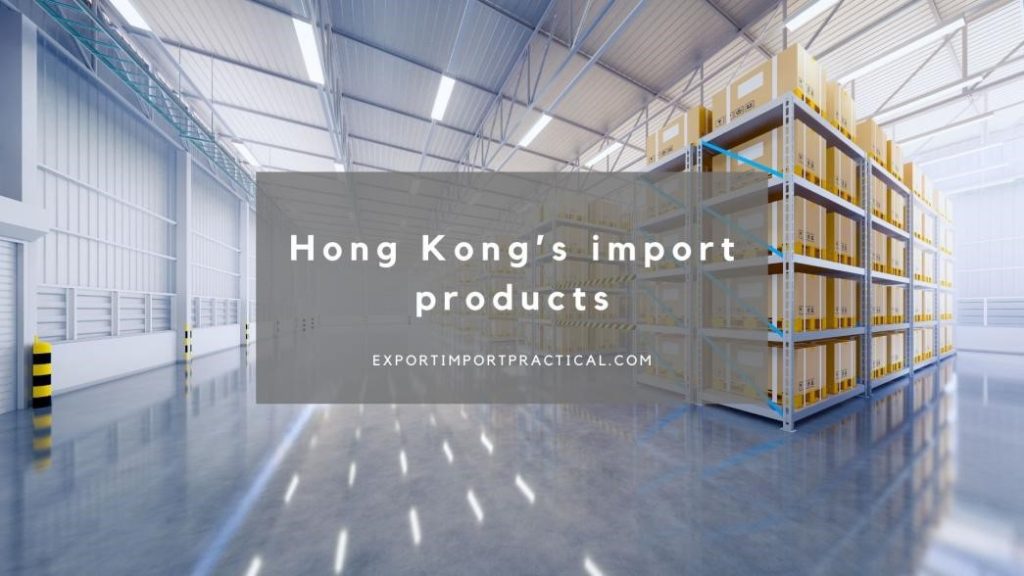
Fruits
Hong Kong is a dynamic market and re-exports a wide variety of fresh fruits. In 2017, the country imported $ 2.6 billion and re-exported $ 1.6 billion.
Because of having no tax on fruits and agricultural products and simple customs procedures, Hong Kong attracts many suppliers for fruits and agricultural products.
The fruit products which Hong Kong imported are grapes, cherries, blueberries, oranges, durians, apples, tropical fruits such as longan, dragon fruit, litchi.
A big volume of the imported fruits will be re-exported to mainland China.
Footwear
Each year, Hong Kong spends 4-5 billion on importing footwear from other countries. Hong Kong is the 7th country in terms of footwear import turnover in 2014 in the world. In the period 2010-2014, the country’s footwear imports tended to decrease slightly -3%.
Pork
Hong Kong pork imports from Italy have increased to nearly 3,000 tons in the first 9 months of 2016. Pork imports from Spain increased more than 2 times. British pork exports to Hong Kong are up to 2,800 tons.
Rice
Hong Kong is the key market for high-end rice products. Thailand and Vietnam are the largest rice exporters to Hong Kong
Import regulations in Hong Kong
Hong Kong has a 0% tariff on most goods, except for a few items such as beer, alcohol, tobacco, petroleum, and methanol. Import bans and control of permits done for items in the fields of health, security, environmental protection, and compliance with international obligations. Customs procedures are relatively simple, facilitating trade. Hong Kong is also a member of the WTO and APEC.
The Certificate of Origin (CO) is not a mandatory export document, required only for transactions that require customs formalities from the importing country or to satisfy the buyer’s request.
How to export goods to Hong Kong
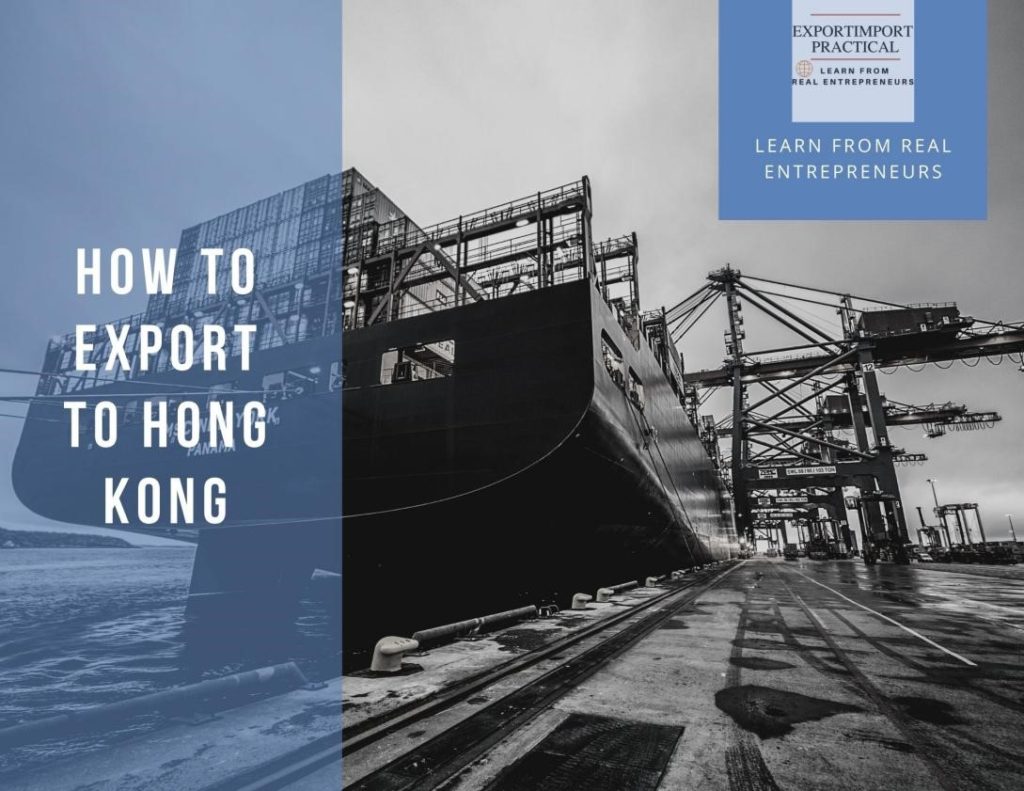
If you want to sell your products in the Hong Kong market, then you should prepare for this. You should create an export plan on how to win the market. Exporting has advantages and disadvantages. Even it is a competitive market, but if you happen to have a great product, then for sure, you have an opportunity to take your stake.
90% of goods on the Hong Kong market are from different countries around the world. So Hong Kong is considered a giant cargo transshipment port of the world. As the re-export market, exporters can access other markets in the world through Hong Kong.
- One key for success is to have a local reliable partner who has the contacts of the local customers and resellers.
To access this market, exporters should build close business relationships with their partners in the Hong Kong market, such as: setting up reliable agents, working with export intermediaries, purchasing companies, or other business partners, organizing market surveys, research and inquiries.
Steps for exporting to HK
In here, we assume, you have already a buyer, importers from HK ready and willing to purchase products from you. It is very important to regularly learn more, how to find buyers and how to get export orders.
Step 1: Learn the regulations and standards for the products you want to export to HK
If you export agricultural products, you need to find out the list of items that are allowed or not allowed to Hong Kong, such as:
- Regulations on food safety and hygiene
- Regulations on plant protection drugs
- Provisions on avoiding infection
- Regulations on product ingredients
To learn the regulations, you should let your customer in HK make all sure first. Because he is the one who must prove to HK authorities that all meets the requirements.
Step 2: Sign ordering contract with customer and collect advance payment
After it has been confirmed, the import regulations and requirements for the products can be met, then you should sign PO ( Purchase order) with the customer. This contract means the order has been confirmed, after order confirmed, you should send the invoice for advance payment. After payment received, you should start processing the order!
Step 3: Understand the transportation regulations in Hong Kong
The shipping rules are different from place to place, so be mindful of the customs laws to process your transportation. Always use a professional freight forwarding company or agent who manages all and contacts directly with the shipping line. The shipping line can arrange whole transport from your overseas warehouse to HK shipping port/airport.
Step 4: Prepare the documents for custom and inspection
After arriving at the port, the goods will go through customs, board the ship, and export to Hong Kong.
All items shipped internationally must be inspected and passed through Hong Kong customs regardless of whether you choose to ship by sea, air, or land. Items can only be imported or exported out of the country after complete the customs clearance.
Customs may keep or confiscate your shipment if you do not prepare the correct documents for customs clearance.
* These documents, your partner (HK importer) must get from you to clear customs in HK. Also for your own country export custom, you need to provide the documentation.
Read also: export-import documentation and procedures.
You need to prepare relevant documents in advance.
Customs control in Hong Kong examines submitted documents such as:
- Invoice
- Packing list
- Certificate of quality (Certificate of Quality-C / Q)
- Certificate of origin (Certificate of origin – C / O)
- Phytosanitary certificate
- Fumigation certificate
- Import/export license or removal permit (if required).
- Copy of cargo storage notification (if any).
- Other supporting documents such as B / L, AWB (Airwaybill) bill, statement, etc.
Step 5: Buy insurance
You can contact insurance companies to buy insurance for your shipment. The insurance will depend on the value of your goods.
Step 6: Packing at the warehouse
In this step, you do with the technical team and workers at the factory to pack the goods in a required way. Note how pallet types, size, quantity, number of cardboard layers according to regulations of the importer, mark, print on each package.
Step 7: Received the balance payment from your HK importer
Before you ship the goods, you shall receive the balance payment from your customer.
Step 8: Goods transported in bulk by truck, train, ship, or aircraft (freight) to your customer
For Incoterms like EXW and FCA, freight for export is the responsibility of the buyer.
If your responsibility is to arrange the freight process and the freight forwarder does not provide this service, you can manage the freight forwarding by yourself. Or buy the solution from a local shipping company.
It is important to also consider all the possible risks in the international business and find a way to lower or eliminate these.
How to import from Hong Kong
For most of the small import companies and online sellers in USA and EU, it is beneficial to import goods from HK. There are many reasons for this.
1. Diverse and plentiful goods
There many items in the wholesale markets in Hong Kong. Hong Kong is a giant warehouse of Asia because it has many merchants, fashion shops, and garment factories.
2. Quality guaranteed
Hong Kong has a highly qualified staff that has brought good quality products and sold wholesales for reputable companies for many years
3. Attractive price
Most of the products imported from HK have been manufactured in China, Vietnam, Korea, Thailand, and in other manufacturing hubs, which means the price can be attractive and gives high profits if resell in the EU or USA. Importing from HK from the pricing perspective is similar to importing from China.
The beneficial goods for small business to import from Hong Kong
Tea
Hong Kong people love to drink tea because the tea in Hong Kong is not only delicious but also diverse. Some tea shops that you can refer to: MingChang tea house, TWG Tea, Fook Ming Tong.
Watches
Hong Kong has famous brand shops such as Chopard, Rolex, Cartier. Buying watches in Hong Kong guarantees that you will have a wide choice of available.
Electronic products
Hong Kong electronics are quite diverse in terms of designs and functionality. Most shopping malls and stores sell electronic products at different prices.
When buying electronics in Hong Kong, you need to check the warranty. Hong Kong has electronic products from different countries around the world, so they need a global warranty system for more convenient repair. The reputable stores will always guarantee that customers but also have some stores do not have.
Jewelry
Hong Kong is the 4th largest jewelry processing center in the world. The quality of goods in Hong Kong is highly appreciated.
Clothes
You will easily find many places, shops, markets, and clothes in Hong Kong. The source of goods is extremely attractive and diverse, suitable for many different types of customers.
Electronic accessories and components
This is also one of the commercial items you can import at original prices in Hong Kong, but you will need to have a lot of knowledge about this item if you do not want to buy the wrong ones.
Steps to import goods from Hong Kong
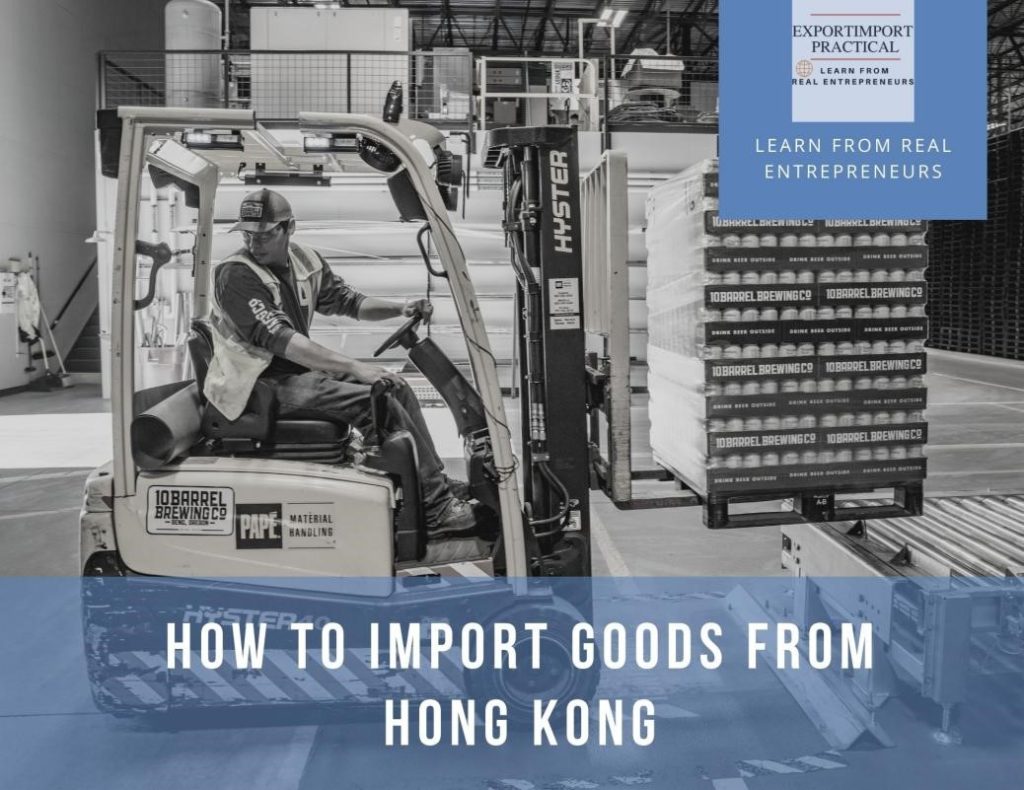
Step 1: Select the supplier for the products
Most important is to find reliable suplier.
The keys to decide a suitable supplier:
- Product quality
Before looking for suppliers, you should set some criteria to evaluate the quality of products and materials that they need to achieve. And of course, these quality standards need to be agreed upon and committed before you start importing.
- On-time delivery
You can compare costs and prices between suppliers to suit your budget and the costs. The supplier should be able to deliver products at the right time, place, quality, and quantity of goods, right means of transportation.
- Warranty policy and customer service
When deciding to work with a supplier long-term, you need to pay attention to the product warranty terms.
If there is an incident that causes the goods to be damaged or the quality is not as committed, how are the supplier’s consulting, handling, and how is the warranty services?
Step 2: Sign an import contract
When signing a contract with a supplier, you should clearly outline the main points of the contract, such as:
1 Each party’s responsibility
2 Delivery terms and terms of sale
3 Commodity prices
4 Place of delivery: port, warehouse
5 Payment method: COD, L / C, T/T, …
6 Product technical standards such as product licensing
Step 3: Payment confirmation
You can choose 1 of 5 different payment methods for importing:
• Payment by cash, cheques: ensure completed documentation of the required goods, strictly comply with regulations on payment for imported goods. To secure these factors, follow the 4-step procedure:
– Request the receiving party to present identification documents (letter of introduction, passport)
Carefully check the terms of the original contract or refer to the stock of available goods.
– Transfer money to the supplier.
• Pay by money transfer: Follow the 3-step process:
– At the bank, you open a foreign currency account to take a money order form.
– Fill in the information and sign the money order, accompanied by a set of documents (Import contract, Application for buying foreign currency and purchase bill of the foreign currency if any, Order of payment if need to buy foreign currency)
– Finished, get the bank’s confirmation, and notify the seller.
• Payment by wire transfer: It is important to note that you no need to accept payment in advance for deposits and goods. This method has a low fee but high risk.
• Payment by letter of credit (LC): The process goes through 3 steps:
– At the bank opening a foreign currency payment account, take an application form to open a letter of credit.
– Fill in the information and sign the LC application form with the import contract. If you borrow money, you must have a credit contract and collateral, a mortgage contract with a consignment, a warehouse lease contract with a set of documents to open the LC.
– Pay LC opening fee and get notification confirmation to customers.
• Payment by collection method: The condition is that the importer must have prestige, good business results, and strong financial potential.
Step 4: Receiving the goods
• Receive goods at ports: There is a receipt of goods, documents of receipt, and the original bill of lading D / O; pay warehouse rental, loading, and unloading fees; send delivery orders to the port authority’s office to confirm and locate the cargo at the port; Send the delivery order to the warehouse department to make a release note.
• Importing process: Bring the letter of recommendation and original bill of lading to the shipping company to get the delivery order; take the worker to the site to check the goods; presenting documents with delivery orders to port line management to confirm delivery orders; make stock release note and receive the goods.
• Retail goods: Bring the original bill of lading (the bill of lading of goods) to the shipping company to get the delivery order; pay the fee for withdrawing money and taking place points for inspection; go to the shipping line at the port to confirm the delivery order then receive the goods.
Conclusion
Hong Kong is an economic center with a long history and is also home to many corporate headquarters.
The creative dynamism of the people here creates opportunities, promises to be an economic and import-export center of the world. That is why Hong Kong is at the top of the list of countries where you should start your import/export business.
If you want to learn how to start your own export-import business online or offline, then we have online courses and programs which will give you the best guide to start an international business from scratch. We have also tools and resources which help you to grow and expand your business and get more customers and raise profitability.
You are advised to take courses and use the resources ad tools listed below:
- Export-import business courses and programs
- Most popular online exim course: “Zero to first deal“
- Resources and action plan for exporters/importers, online sellers.
